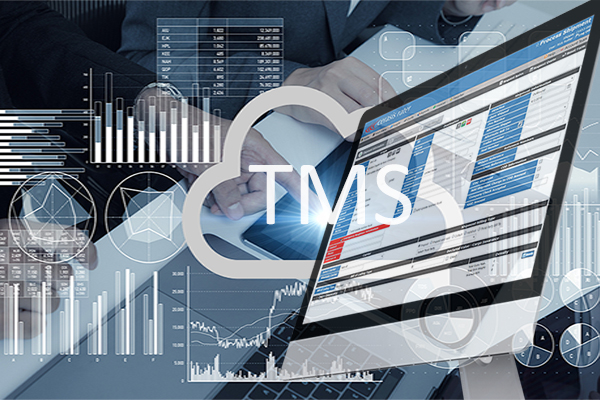Transportation Management Systems and Collaboration: How a TMS Creates a Network Effect
A common issue in today’s world of e-commerce and increasing trade resides within TMS and collaboration.
TMS and collaboration is the way supply chains work together and communicate with their partners, suppliers, customers, distributors, and everyone in between.
Ineffective TMS and collaboration will effectively result in problems further down the line, and in the case of e-commerce orders, customers may not receive their products on time, if at all.
Fortunately, the implementation of a TMS can provide the jolt of energy and accuracy necessary to achieve optimum results and responsiveness from your supply chain.
This is possible through its creation of a network effect, and shippers need to understand how this effect is realized.
What’s Wrong with TMS and Collaboration and Efficiency Today?
As explained by an older Material Handling & Logistics’ article, the biggest challenge for shippers today is understanding and buying into the network effect.
Although this sentiment dates to 2006, it continues as Amazon relentlessly stares down every retailer on the planet. The best-laid systems in the world will lack value if they do not leverage TMS and collaboration.
Shippers may fail to populate the correct data within the system, and carriers may rely on outdated information to generate freight quotes. Additional problems with poor collaboration and efficiency include:
- Inability to aggregate and share data
- An unwillingness to relinquish control over data ownership
- Poor visibility into the use of various logistics modes
- Reliance on outdated systems or processes to manage logistics
The list only grows longer as these problems result in compounding consequences for supply chain management.
New Technology Stimulates TMS and Collaboration
The introduction of new technology in logistics is not a new concept. Improvements in supply chain management have come out to everyday operations and insight from individual companies.
The rise of cloud computing software offered the promise of cheaper, faster access to the power of a TMS, and ongoing technological development, such as the development of smart sensors within ocean shipping containers, contribute to more information that shippers can leverage.
The same example applies to the rise of electronic logging device (ELD) legislation, and the ability to provide complete insight and traceability into a truckers’ movements strengthen the cause for ELD.
Within a few short years, the ELD mandate had taken effect, and shippers across the country realize the benefits of improved visibility into transportation.
Of course, the implementation of the ELD mandate did contribute to tighter capacity and out-of-service designations. However, its overarching benefits outweigh the damages.
How a TMS Creates a Network Effect
A network effect refers to the compounding effects within an established network that derive from a single improvement. In other words, an improvement in one activity that results in improvements throughout the remainder of the day’s events.
Creating the most straightforward example would be waking up on the right side of the bed, and the rest of your day falling into place.
Implementing a TMS has this effect on your supply chain network. It eliminates the uncertainty and areas that may occur when performing your internal process, such as shipment tendering or selecting the right degree of cargo insurance.
Since your information resides within the TMS, which releases information to appropriate carriers and other relevant supply chain entities, risk decreases.
Furthermore, subsequent supply chain operations receive a boost in efficiency resulting from improved planning on your part. A TMS furthers the collaboration among shippers, carriers, logistics service providers, freight forwarders, freight brokers, and other supply chain entities.
Augment Collaboration with TMS Implementation Now
As collaboration improves among these parties, everyone realizes the benefits as a whole and individually.
For companies trying to stay competitive with Amazon and its growing prowess in developing its own fleet of vehicles, drones and logistics capabilities, increased use of TMS and collaboration will continue to grow in importance and serve to combat the Amazon Effect.
It sounds ironic. A TMS that creates a network effect is tantamount to overcoming the Amazon Effect.
Related Article: Asking the Right Questions When Evaluating Today’s TMS Transportation Management Systems
Related Transportation Management White Papers
How to Implement & Integrate a TMS to Drive Adoption for a Larger ROI New!
In this exclusive and educational white paper, we explore the factors shippers should review when vetting software and TMS vendors. Download Now!
A Guide to Maximize the Use of a Transportation Management System New!
This white paper is a must-read for those shippers looking to maximize the use of a transportation management system, TMS, after the onboarding period. Download Now!
Shipper’s Guide to Evaluating, Selecting, & Building the Business Case for TMS
This white paper explores the important factors shippers should review when vetting software and transportation management system vendors, this is a must-read for shippers looking to implement a TMS to better manage freight. Download Now!
The State of Transportation Management Systems, Current Trends, & Key Benefits of a TMS
In this white paper, you will learn about; what a transportation management system is and what it can do for shippers, the current state of transportation management system in use, and the future state of the TMS market. Download Now!
How a TMS Makes Shippers’ Freight More Attractive
This is a must-read paper for shippers who are wanting to make sure they are working collaboratively with carriers to gain and maintain “Shipper of Choice” status by following not only best practices but optimizing those sound processes with the use of a TMS. Download Now!
The Uses and Substantial Benefits of Transportation Management Systems
In this e-book, we explore the current state of and demands in the landscape of the TMS world, the uses, and functions of a TMS, including a section on the TMS study by Software Advice. Download Now!
More Resources from Cerasis
Article topics
Email Sign Up

















